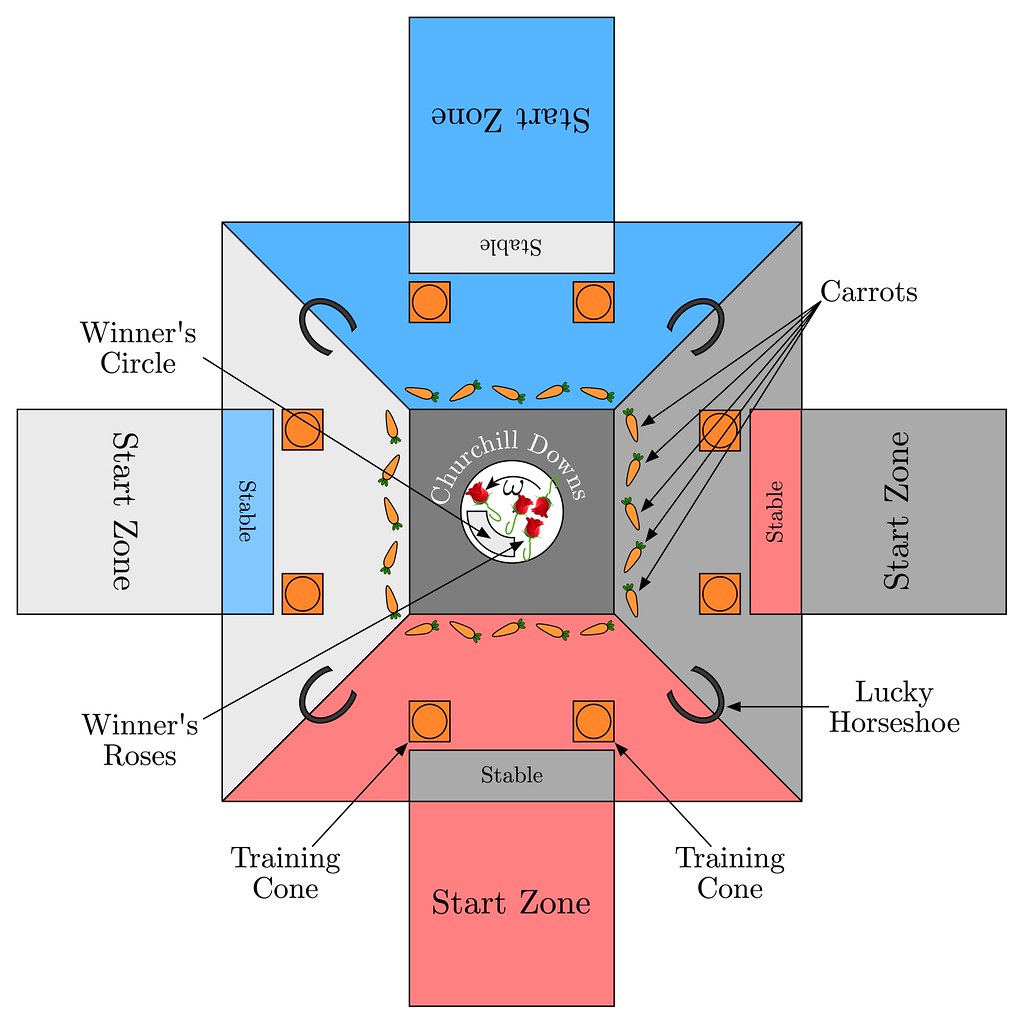The Kentucky Derby
MCHE 201 Final Project — Spring 2019
Where: Blackham Coliseum
RSVP: Dr. Joshua Vaughan
In the time since its inception in 1875, the Kentucky Derby has grown into a grand American tradition. Each year over one hundred thousand spectators flock to Churchill Downs to be a part of the Kentucky Derby festivities and to watch the 1 1/4 mile long horse race. Millions more watch watch on television. The Kentucky Derby is home to a host of traditions. Spectators are typically well dressed, and female attendees often wear large, fancy hats. Another tradition is the awarding of a blanket roses to the winner. Given its prestige, the road for competitors to the Derby is a hard one, for the horses, jockeys, and trainers. Luckily, MCHE 201 students can help.
MCHE 201 students will design and build devices that have thirty seconds to Complete Training Runs, Collect Carrots, Collect Lucky Horseshoes, Finish Strong Down the Home Stretch, Send Jockeys to Churchill Downs, and Collect the Winner's Roses. The capabilities of these devices will be demonstrated on the representation of the Kentucky Derby shown in Figure 1.
The Competition
On April 25th, the Kentucky Derby contest will be held in Blackham Coliseum. There will be two events.
Design Review:From 5 — 6pm, a panel of judges will perform a design review of each machine. The teams must describe their machines quickly and clearly to the judges that visit, who will evaluate each team on aesthetics, ingenuity, and presentation.
Kentucky Derby Robotics Contest:Following the design review, the robots that the students have designed and built will compete in a head-to-head competition on the representation of the Kentucky Derby shown in Figure 1.
Competition Details
The student robots can earn, or lose, points based on their robot's performance in each category of the Kentucky Derby contest. The details of each are listed below.
Complete Training Runs: In each team zone, two Training Cones (small cones) are located in front of the Stable. To train for the Kentucky Derby, the Training Cone must be completely removed from the team zone. For each Training Cone that remains in the team zone, the team will be penalized 15 points.
Collect Carrots: There are five carrots (small toy carrots) in each team zone. For each carrot that is collected and placed completely in the Stable within the team’s zone, the team will earn 5 points.
Collect Lucky Horseshoes: Lucky Horseshoes (a plastic horseshoe) are located at the edges between the team zone and each of its neighbors. For each horseshoe collected completely into the team’s zone, the team will earn 15 points.
Finish Strong Down the Home Stretch: In order to win the race, you have to finish strong down the home stretch. To do so, the team’s device must be completely outside the team’s zone a the end of the round of competition. Doing so will earn 15 points.
Send Jockeys to Churchill Downs: Prior to the each competition round, each team will be given three Jockeys (LEGO minifigures). For Jockey that makes it to Churchill Downs, the team will earn 5 points. For each who makes it to the the rotating Winner’s Circle, the team will earn 15 points. In order to earn the points for the Winner’s Circle, the Jockey must be completely contained in the Winner’s Circle, including in the vertical dimension. If a Jockey is not completely contained in the Winner’s Circle, but is still within the Churchill Downs, Churchill Downs points will be awarded as appropriate.
Collect the Winner’s Roses: There are four roses (cloth roses) waiting for the winner in infield of Churchill Downs. For each Winner’s Rose completely collected into the team’s zone, the team will earn 50 points.
For More Information…
For more information, see the full set of competition rules on the class website. You can also have a look at the hard work the students have put in already in the class flickr album. Pictures from past semesters are also available in a flickr collection.
A pdf of of this page is also available.
Acknowledgements
A kit of additional mechatronic components is issued to each team for use in this project. These kits were purchased via funding provided by a University of Louisiana at Lafayette Course and Curriculum Design Grant and a University of Louisiana at Lafayette STEP Award.
